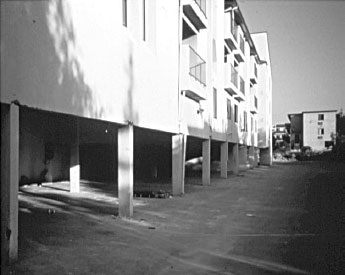Could Banks See Loses in Commercial Real Estate as Large as They Suffered in Residential Real Estate?
Have you ever noticed how hard it is to find information about commercial real estate and what is to come in the future? Since late 2007, early 2008 newspapers, magazines and finance websites have had a plethora of information about the future of residential real estate, but it seems as if the future of commercial real estate is a topic many avoid.
Working in the commercial lending industry, we are faced with all types of questions from brokers, investors, buyers and owners. Many want to know what it is we are seeing in the commercial real estate lending market and what we expect to see in the future. In my experience, finding any definitive answer is difficult, but when you are in an environment where you work with these individuals and you are working to provide commercial mortgages, it becomes apparent that something is happening.
Over the last few years, we have seen delinquencies rise and fall, we have seen investors become much more cautious with their investments, we have seen deals come to us where the lender is requiring payoff, but the property value is too low to provide a loan which sufficiently pays off the bank. What we are experiencing the most however is that many banks are calling their loans and getting out of the commercial mortgage business.
On February 14, 2010 during a drive from Sacramento to San Francisco, I came across a talk radio show discussing the future of Commercial Real Estate. The guest was Tony Wood, author of the “Commercial Real Estate Tsunami, A Survivor’s Guide for Lenders, Owners, Buyers and Brokers.” I was hooked immediately. Everything out of Mr. Wood’s mouth rang true and I finally found what I was looking for…how to prepare for the future.
I listened the entire segment and learned that the book would not be available until May, but I could pre-order the book immediately. The day I received it, I read it cover to cover. I keep it at my desk to use as a reference and I also use it to provide examples when placed in similar situations. This book has given me insight on how to prepare for what is coming.
As you know, we are currently in a very weak economy, to make matters worse, “All indications are that the trillion-plus dollars of commercial real estate loan maturities between 2010 through 2013 combined with the commercial real estate markets being battered by the economic collapse we are currently experiencing will result in conditions the marketplace has never seen before” (Tsunami). It is believed that the coming losses will be historic and that this will have a devastating impact on lenders who are not prepared.
This means being prepared in all aspects of commercial real estate finance which include foreclosures, REO properties, property management, loan modifications, lending expectations and of course, investor concerns. There are ways to prepare for what is coming, but the time to do so is now.
The book provides congressional testimony from the Real Estate Round Table, The National Association of Realtors and the Federal Reserve from July of 2009. It is an interesting read which details the future problems in commercial real estate. It shows that many are aware of what is coming, but are not quite sure how to handle it. The book is one of a kind, in which it offers solutions and ways to prepare for the impact debt maturities will have on our economy.
For lenders, it will be important to pay attention to borrowers. We have so many new loan requests coming to us reporting that they have to pay off their loan in the next 30 to 60 days. Some of these borrowers have great credit, great pay histories and financials, yet their banks are requiring them to payoff their loan. This is causing many of them to default and results in losses to the bank. Many banks are accepting short pays on these loans just to get them off the books. The problem is that the banks aren’t listening to the borrower. Instead of working out an amicable solution, some banks are throwing these good credit customers out the door and creating the losses for themselves. Of course, not all loans are workable, the lender has to really listen to the borrower, review their financials and complete a thorough assessment to see if there is a possible workout including maturity extensions and loan modifications
Owners will also have many battles to fight, even if they are not in a position where they have to refinance. With vacancy rates increasing and rental rates decreasing, it will be important to maintain your building occupancy. Pride of ownership will be a huge factor as well as property maintenance. The tenant is king in these situations and if you want to keep your tenants then you need to be sure they are happy with their surroundings, because the guy down the street is offering months of free rent and lower lease rates. Some are even throwing in large contributions to tenant improvements, can you compete? Owners who will soon be facing a refinance need to get started now. There is no time to wait because if you are not ahead of the game, you will be shocked when you find out the bank is not willing to give you the loan to value you were hoping for.
Buyers need to be sure they are paying attention to the market and not just buying what they think will be a great deal. There are hidden dangers in buying an REO property that if a buyer did not thoroughly research the local market, they could end up with a cash eating property. Due diligence has never been more important, why did the previous owner fail? Is there something wrong with the property? If you’re buying a distressed asset, the lender typically does not know the history, do you? It will be important to do your homework.
Commercial Real Estate Brokers are already having a tough time trying to sell and lease properties. The property owners are pushing them to sell, the buyers want to buy properties for pennies. Now is the time for brokers to start to think outside the box. Look for ways to save through property tax appeals and lease restructuring. Plan ahead and create a recover plan. If you haven’t created one before you have losses, you won’t have the time to pull yourself out. Plan ahead and be ready for more losses and how to recover from them.
While I have only touched on a few ideas from this book, there are many ways to prepare for the “Tsunami”. Even though I feel prepared, I still have many questions. Lucky for me, on Wednesday October 6, I have the opportunity to meet Mr. Wood and I plan to ask him personally.
We have all seen the devastation and immense losses resulting from the crash of residential real estate… are you prepared for the upcoming losses to commercial real estate? If not, it is time to get started.
This blog article was written by Angelica Gardner, the Senior Vice President of Blackburne & Sons Realty Capital Corporation, a $50 million commercial hard money lender based in Sacramento, California. The views expressed are her own. She can be reached at 916-338-3232.



 When the bubble popped, conduit lenders found that many of their loans were significantly upside down. The borrowers owed far more than the properties were worth.The lenders swore to never let this happen again. The CMBS industry therefore adopted a new financial ratio - the Debt Yield Ratio - to determine the maximum size of their commercial real estate loans.
When the bubble popped, conduit lenders found that many of their loans were significantly upside down. The borrowers owed far more than the properties were worth.The lenders swore to never let this happen again. The CMBS industry therefore adopted a new financial ratio - the Debt Yield Ratio - to determine the maximum size of their commercial real estate loans.
